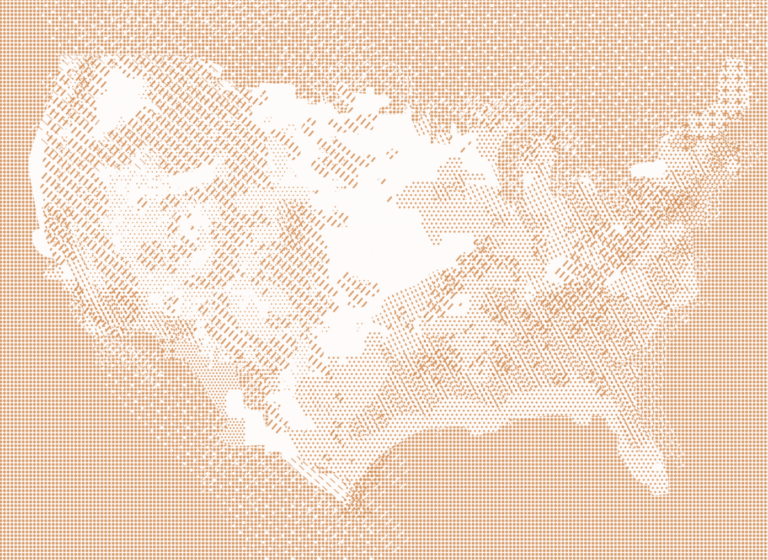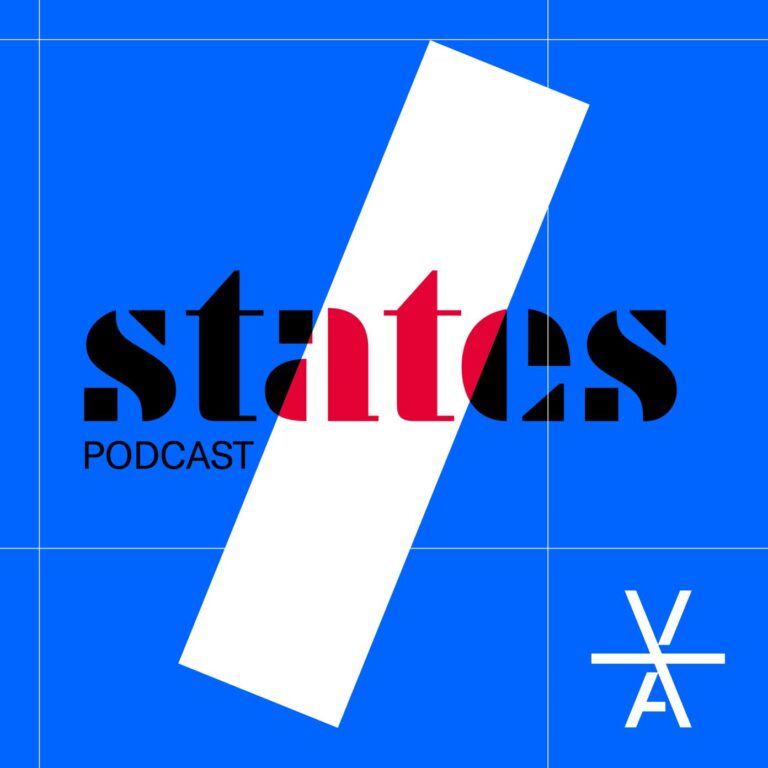
Chloé Bensahel
Textile Artist
Novembre, 3rd 2023 - Novembre, 18th 2023 & February, 2nd 2024 - May 15th 2024
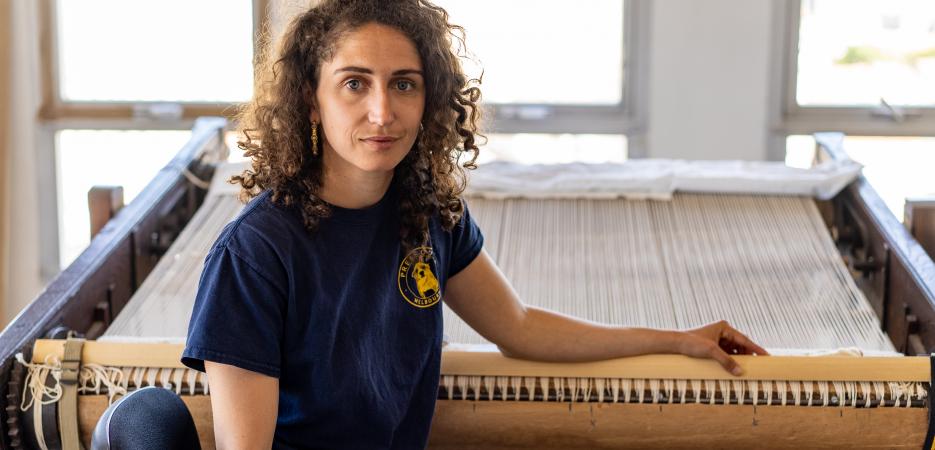
Cyrille de la Motte Rouge
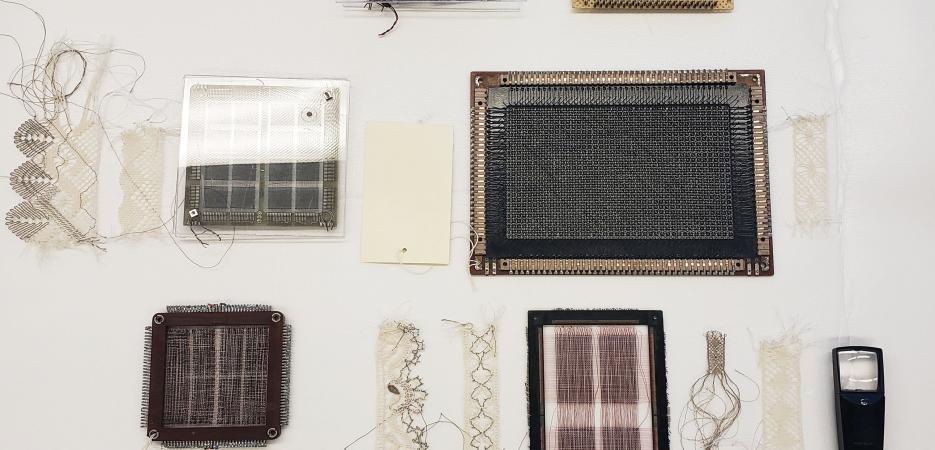
- Craft & Design
- Boston
“The goal of this research is to investigate a material that performs the multicultural and historical function of textiles as memory storage systems.”
I graduated from Parsons School of Design in New York with a degree in textiles in 2013, then trained with artisans, first in Kyoto at Jun Tomita’s workshop, and later in Australia at the Australian Tapestry Workshop. There, I discovered a world where textiles convey both the land from which they originate and the history of the people, using an age-old technique that connects material and gesture.
As a weaver-artist, I am interested in both the ancient and contemporary facets of a material “coded” with stories, written through the gestures necessary to create it. I uncover stories embedded in the material through subtle details such as a stitch, a button, an embroidery, or an intention. I weave materials imbued with stories: paper carrying texts, shirts once belonging to strangers. In 2019, I continued this work at the Mobilier National in the tapestry workshops, aiming to combine it with the innovation of conductive thread (Google Jacquard). This new woven material, through gesture, can activate sounds, lights, or any other connected devices. Thus, the material can tell stories, whether through the softness of a caress or the vitality of a dance.
Born in 1991, Chloé Bensahel is a Franco-American artist who combines performance, textiles, and multimedia to explore the relationship between language and identity. Inspired by her family’s migratory experience, she integrates narrative and craft traditions into her work, creating an embedded or coded language. In 2021, she was awarded a Smithsonian Institution Fellowship. Her work has been exhibited worldwide, including at the Mobilier National in Paris, the Australian Tapestry Workshop in Melbourne, and the French Embassy in Washington.
The relationship between textiles and memory has always existed. Textile techniques, powerful and efficient programming languages, helped send humans into space with the invention of magnetic core memory, which combines textile structures with binary code. These technologies, primarily created by women from ethnic minorities, first in Boston and later abroad, laid the groundwork for a system in which artisanal work has largely been rendered invisible.
A residency at Boston’s Villa Albertine will allow me to return to MIT, where magnetic core memory was woven, to work on a new memory technology in collaboration with the MIT Media Lab. I am particularly interested in how the properties of core memory (ferroelectricity, conductive thread) can be leveraged to create contemporary technology from traditional textile techniques (lace, weaving, knitting). The goal is to find a material that fulfills the historical and multicultural function of a textile-based memory storage system.
Experiments will be conducted at MIT with a team of researchers from the MIT Media Lab (Vera Van de Seyp, Cédric Honnet, Ozgun Kilic Afsar). Samples will be woven by hand and on a digital Jacquard loom (TC2) at the Advanced Functional Fabrics of America laboratory, allowing for continuous testing of different prototypes. We will focus on magnetic properties so that textiles can change shape through magnetic fields and retain that shape (shape memory). Handwoven textile surfaces will be able to change shape with the touch of a hand, in an approach reminiscent of soft robotics. This interdisciplinary study will be documented and published online, in an approach where craftsmanship and engineering are intrinsically linked.
Boston’s history is deeply rooted in both textile production and technological innovation. Its textile mills enabled a skilled workforce to produce hand-woven memory technologies for the space missions of the 1950s and 1960s. The artisanal expertise required to produce these electronic devices was later outsourced abroad in the 1960s, transforming our perception of electronic objects, which are no longer seen as handmade creations, even though they are often invented or assembled manually. My residency will build on this rich historical foundation to imagine new technologies. By revisiting early space technologies and traditional textile practices, it will highlight the innovation of manual textile techniques, in collaboration with researchers at the MIT Media Lab. I aim to explore how programming and engineering have come to be regarded as forward-looking professions, while craftsmanship is perceived as outdated, and to investigate the potential connection between these categories and ethnic or gender hierarchies. With the recent rise of smart textiles, the relationship between textiles and technology has been brought back into focus in Boston. This offers an ideal opportunity to explore new research methods in which craft and technology work together equally to determine the form and function of a material. I am eager to engage with key figures in Boston’s innovation sector, organizing debates or conferences to remind people that textile techniques are a sophisticated programming language capable of generating future inventions.
In partnership with
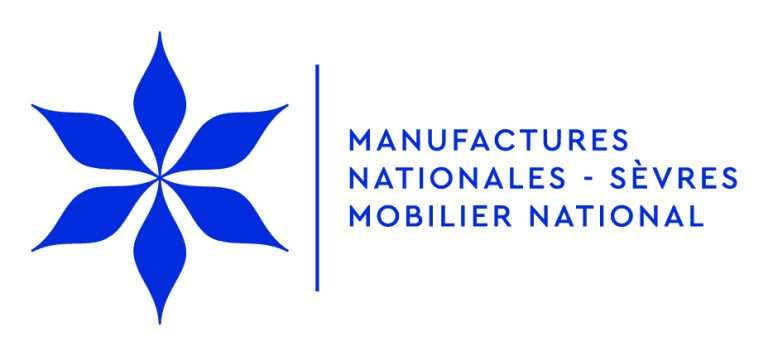
Manufactures nationales – Sèvres & Mobilier national
Resulting from the merger between the Mobilier national and the Cité de la Céramique – Sèvres & Limoges, the National Manufactures were established on January 1, 2025, to promote the excellence of French craftsmanship and highlight the richness of both tangible and intangible heritage through more than 53 artistic crafts practiced within its manufactures and workshops.
Unique worldwide, this new public entity dedicated to decorative arts, crafts, and design combines heritage and creation to play a central role in implementing the national strategy in support of artistic crafts.
Its mission is structured around six key priorities: education and training; research; creation; support for the fragile ecosystem of artistic crafts; heritage promotion; and the international outreach of craftsmanship.
As the heir to four centuries of history, it comprises two museums (the National Museum of Ceramics in Sèvres and the Adrien Dubouché National Museum in Limoges), nine manufactures and creative workshops (including the Sèvres National Manufactory, the Gobelins Tapestry Manufactory, the Beauvais Tapestry Manufactory, the Savonnerie Carpet Manufactory, the lace workshops of Alençon and Le Puy-en-Velay, and the Research and Creation Workshop for contemporary furniture), seven restoration workshops, and a furnishing commission.
Firmly rooted in local territories, this public institution operates across eight departments: in Paris, Hauts-de-Seine (Sèvres), Hérault (Lodève), Creuse (Aubusson), Orne (Alençon), Haute-Loire (Le Puy-en-Velay), Haute-Vienne (Limoges), and Oise (Beauvais).

Fondation Bettencourt Schueller
As a family foundation and a public-interest foundation at the same time, the Fondation Bettencourt Schueller has chosen to “take talents to the top” to contribute to France’s success and influence.
To this end, the Foundation seeks, selects, supports and promotes women and men who are rethinking our future in three fields that make a tangible difference to the common good: life sciences, the arts and an inclusive society.
With a philanthropic mindset, the foundation takes action through prizes, donations, personalized support, effective communication and co-created initiatives.
Since the foundation was founded in 1987, it has awarded prizes to 676 laureates and supported more than 1,400 projects led by talented individuals, teams, associations and organizations.
For more information: www.fondationbs.org | Twitter: @Fondation_BS | Instagram: @fondationbettencourtschueller | Facebook: @BettencourtSchuellerFoundation | #TalentFondationBettencourt



